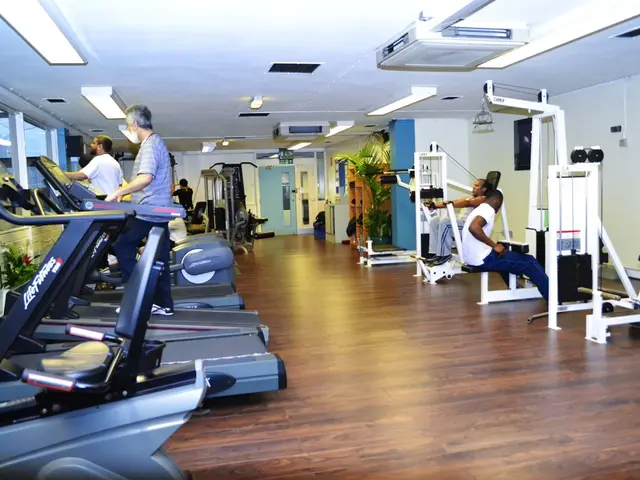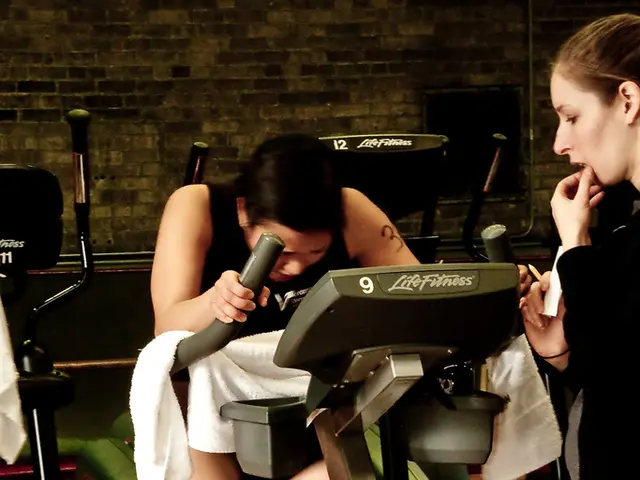Controversy over Bisphosphonates for Bone Health: Are they beneficial or do they increase fracture risk?
Middle-aged Americans at Risk of Bone Fractures, Especially Women
Breaking bones can be a harrowing experience, but approximately 53 million Americans aged 50 and above are at an increased risk due to low bone density and osteoporosis. Women are particularly susceptible, with heightened vulnerability to hip fractures, especially post-menopause, and older men are not immune either.
Commercials advertising bisphosphonates, drugs meant to mitigate the risk, have been widespread. However, the safety and effectiveness of the drug remain subject to question. The primary objective of these oral medications is to slow down the rate of bone thinning, resulting in stronger, less likely-to-fracture bones. Unfortunately, their use is associated with an increased risk of atypical femur fractures – a stark concern considering that these fractures can occur with minimal force or trauma, typically after three years of average drug usage.
Researchers are currently evaluating the efficacy and practicality of long-term bisphosphonate therapy, particularly for women who may utilize the drug over extended periods.
Kaiser Permanente Study Reveals Problematic Long-Term Use
A recent study by Kaiser Permanente found that oral bisphosphonate treatment beyond seven years offered no additional benefit for women in preventing hip fractures. The research was based on a retrospective cohort study of nearly 30,000 women who completed five years of oral bisphosphonate treatment in comparison to women who continued treatment for two additional years.
The results indicated that the cumulative incidence of hip fractures after five years of usage:
- Discontinued after initial 5 years: 23.0 fractures per 1,000 individuals
- Took a six-month break from medication, followed by two additional years of usage: 20.8 fractures per 1,000 individuals
- Continued for an additional five years: 26.8 fractures per 1,000 individuals
The group with a slightly lower ratio of hip fractures seemed to be those who took a short break from the medication before resuming it for an additional two years.
After initial five years of treatment, 37 percent of the women were diagnosed with osteoporosis. Five years later, 507 women from this group had experienced hip fractures.
In 2015, the American Society for Bone and Mineral Research’s Task Force recommended that low-risk patients consider taking a "bisphosphonate 'drug holiday'" after five continuous years of treatment while high-risk patients should continue with ongoing treatment. However, the benefits of continued treatment beyond five years remain unclear.
Maintaining Bone Health Naturally
For those currently taking these medications, it may be beneficial to consult their healthcare provider about potential concerns and the latest research findings. With no consensus on whether extended use may lead to a greater risk of fractures, exploring natural alternatives to boost bone health is a prudent approach.
Regular exercise, particularly weight-bearing activities like walking, jogging, hiking, or dancing, are crucial for maintaining flexibility and promoting healthy bones. Furthermore, an appropriate diet rich in green and yellow vegetables, dairy products, and calcium can help enhance bone density and preserve overall bone health as one ages.
Key Takeaways
- Long-term bisphosphonate therapy beyond five years may offer no additional protection against hip fractures for women.
- Osteoporosis affects millions of Americans, with women being more at risk.
- Natural methods like daily exercise and nutritious foods are effective ways to improve bone health.
- The safety and effectiveness of long-term bisphosphonate therapy, particularly for women, remain subject to question, as a recent Kaiser Permanente study revealed that treatment beyond seven years offered no additional benefit in preventing hip fractures.
- Women are particularly susceptible to bone fractures, especially post-menopause, and while older men are not immune either, they are less likely to experience hip fractures compared to women.
- Natural methods like daily exercise and nutritious foods are effective ways to improve bone health, and this approach can complement or even replace the extended use of bisphosphonates.
- A healthy diet rich in green and yellow vegetables, dairy products, and calcium can help enhance bone density and preserve overall bone health as one ages.
- Regular exercise, particularly weight-bearing activities like walking, jogging, hiking, or dancing, are crucial for maintaining flexibility and promoting healthy bones for the prevention and management of bone fractures, especially among middle-aged Americans.








